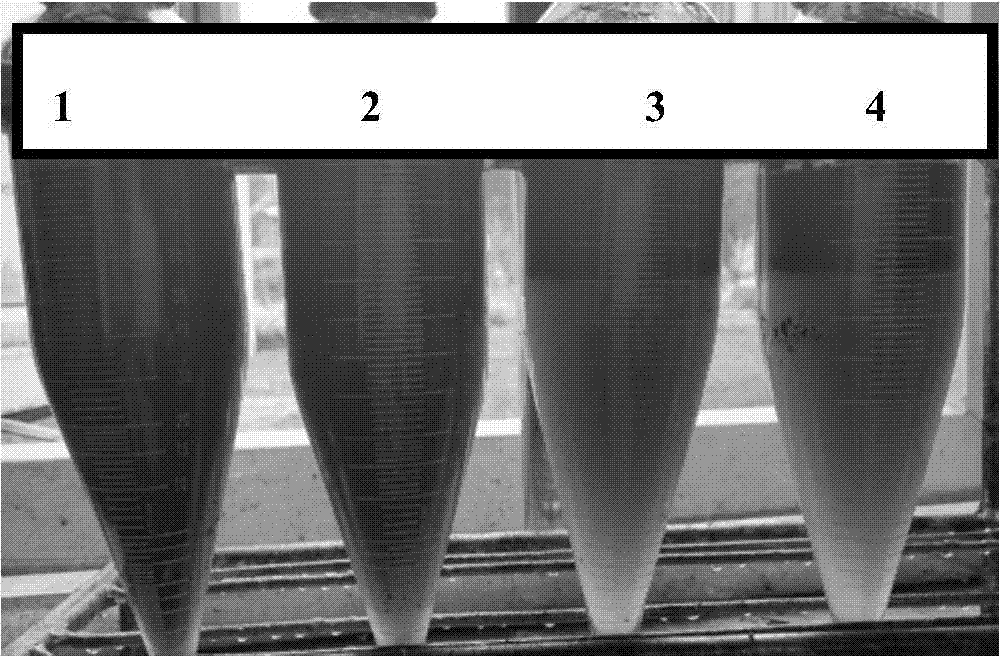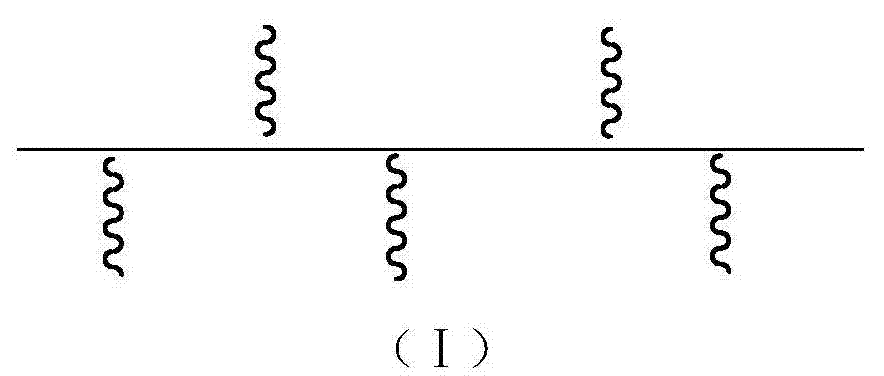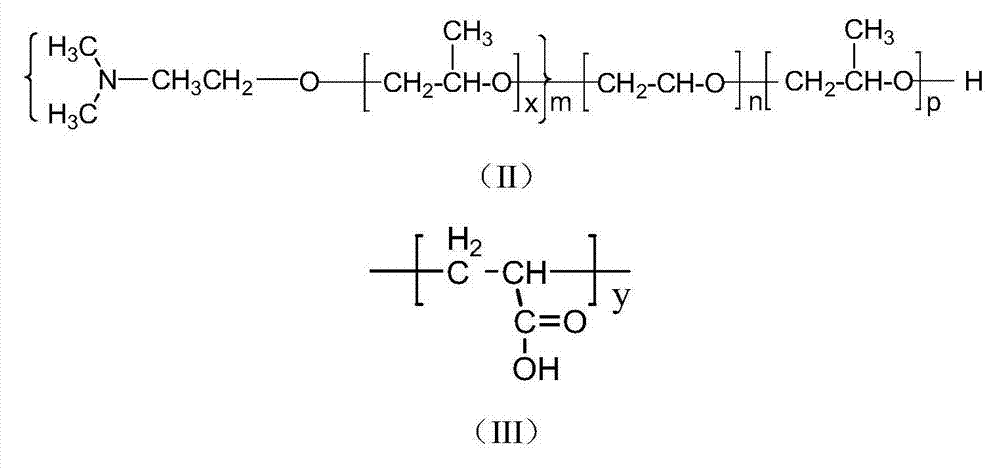Reverse-phase demulsifying agent for treating polymer flooding produced liquid of oil fields and preparation method thereof
A reverse-phase demulsifier and liquid-use technology, which is applied in the field of petroleum industry, can solve problems such as difficult adaptation, increased cost and difficulty of sewage treatment system, sludge clogged filter, etc.
- Summary
- Abstract
- Description
- Claims
- Application Information
AI Technical Summary
Problems solved by technology
Method used
Image
Examples
Embodiment 1
[0031] Embodiment 1 takes N'N-dimethylethanolamine as the preparation of the polypropylene oxide oil head of initiator
[0032] Add 10g N'N-dimethylethanolamine and 2.4g potassium hydroxide to the high-temperature and high-pressure reactor, and seal the reactor well. Before heating up, use nitrogen to blow and replace, then use a vacuum pump to evacuate, repeat twice, then start stirring and raise the temperature, stop heating when the temperature rises to 120°C, open the feed valve, add 790g of propylene oxide dropwise, and control the reaction The temperature does not exceed 140°C and the pressure is controlled below 0.4MPa. After the reaction of the material is completed, the pressure drops and then reacts for 30 minutes to reduce the pressure to 0MPa. Finally, the temperature is lowered and the kettle is opened, and the output is N'N-dimethylethanolamine. The polypropylene oxide oil head of starter, marked as DMEA-79.
Embodiment 2
[0034] The method of Example 1 is adopted, but the amount of propylene oxide is changed to 340g, 450g, 570g, and 990g respectively, and the obtained polypropylene oxide oil head with N'N-dimethylethanolamine as the initiator is the initiator , respectively marked as DMEA-34, DMEA-45, DMEA-57, DMEA-99.
Embodiment 3
[0035] Embodiment 3 is the preparation of ethylene oxide and propylene oxide block polyether with N'N-dimethylethanolamine as initiator
[0036] Add 40g of DMEA-79 oil head and 3.20g of potassium hydroxide to the high temperature and high pressure reactor, and seal the reactor well. Before heating up, use nitrogen to blow and replace, then use a vacuum pump to evacuate, repeat twice, then start stirring and heat up, stop heating when the temperature rises to 120°C, open the feed valve, add 240g of ethylene oxide dropwise, control The reaction temperature does not exceed 140°C and the pressure is controlled below 0.4MPa. After the reaction of the material is completed, the pressure drops and then reacts for 30 minutes to reduce the pressure to 0MPa; then, heat to 130°C and then add 360g of propylene oxide, and control the reaction temperature not to exceed 150°C and the pressure is controlled below 0.4MPa. After the reaction of the material is completed, the pressure drops and ...
PUM
 Login to View More
Login to View More Abstract
Description
Claims
Application Information
 Login to View More
Login to View More - R&D
- Intellectual Property
- Life Sciences
- Materials
- Tech Scout
- Unparalleled Data Quality
- Higher Quality Content
- 60% Fewer Hallucinations
Browse by: Latest US Patents, China's latest patents, Technical Efficacy Thesaurus, Application Domain, Technology Topic, Popular Technical Reports.
© 2025 PatSnap. All rights reserved.Legal|Privacy policy|Modern Slavery Act Transparency Statement|Sitemap|About US| Contact US: help@patsnap.com



